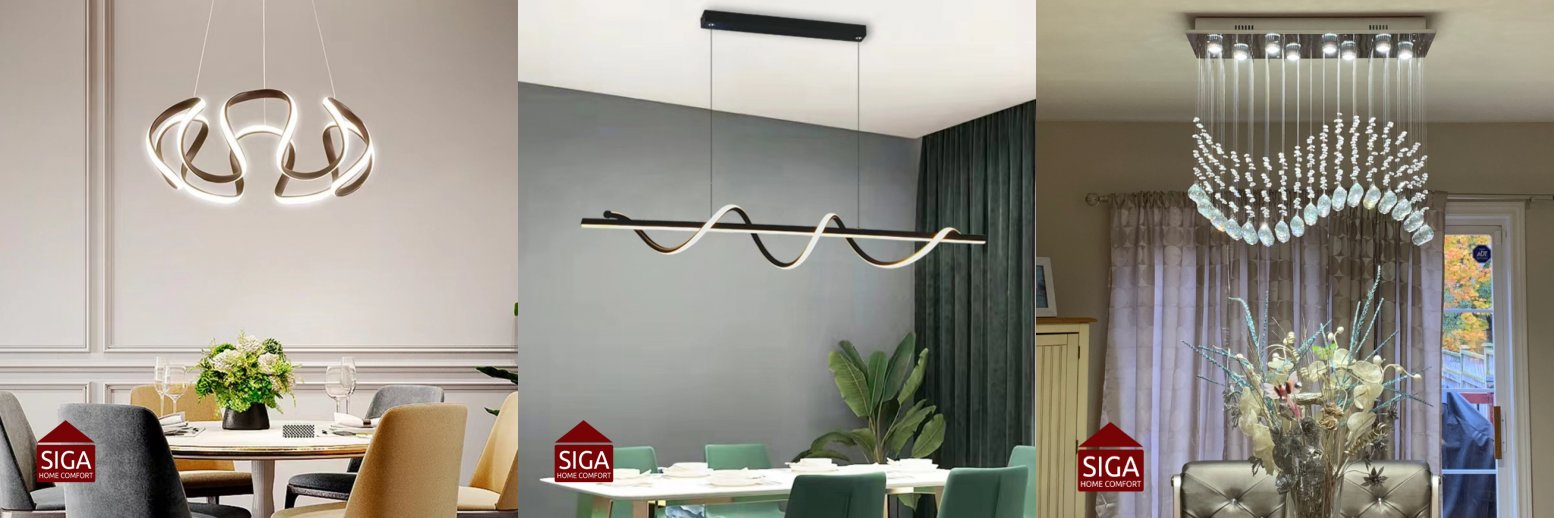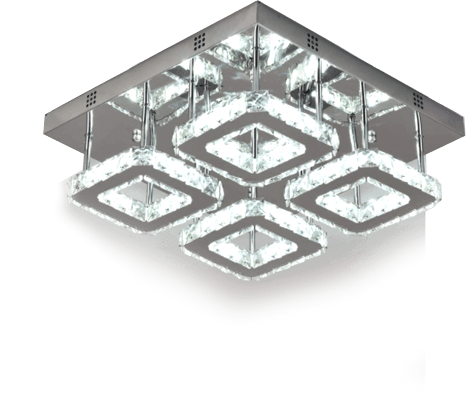Chandelier Size Over Dining Table
Chandeliers make striking centre pieces and artistic elements in dining rooms. Determining the best size of chandelier over dining tables can be tricky, but we can offer some direction through this chandelier size guide. Chandelier placement is based on many factors, including its position in the room, height, and width. Read on to discover how to choose and hang a chandelier that fits perfectly into your dining room’s dimensions and aesthetic.
Measuring Your Dining Space
Measuring the length and width of your dining space is the first step in finding a suitable dining room chandelier.
Determining Chandelier Size Over Dining Table
The diameter of your chandelier is important because lighting fixtures that are too large for a space can overwhelm the area. Meanwhile, a fixture that’s too small for the room can get lost in the design and may not provide an adequate amount of lighting. The standard formula for chandelier sizing is to add the length and width of a room in feet to find the recommended diameter of the fixture in inches. As an example, a dining room that’s 12 feet long and 10 feet wide would have a chandelier with a diameter of 22 inches.
Formula: Room Length in Feet + Room Width in Feet = Chandelier Diameter in Inches
Establishing the best width for a chandelier in a rectangular dining room uses a different formula than that used for the diameter. To find the width, begin by adding the length and width in feet to find the result in inches, and then divide by two. For example, a dining room that’s 30 feet long and 15 feet wide, which adds up to 45 inches, and divided by two, results in a chandelier width of 22.5 inches.
Formula: Room Length in Feet + Room Width in Feet = Number in Inches ÷ 2 = Chandelier Width in Inches
You can also adjust your chandelier size based on your dining room table’s size. In this case, the chandelier’s length should be between one-half and three-fourths of the dining table’s length. The diameter of the chandelier should be around one-half to two-thirds of the table’s width.
Ideal Chandelier Hanging Height
The perfect chandelier height from table to the bottom of the light fixture is typically 15% to 20% of the total height of the dining room. In a formula, this translates to the room’s height in feet multiplied by the percentage. For instance, if the height of your dining room is 16 feet, you’ll multiple 16 by .20 or 20%. In this example, your ideal chandelier height is 3.2 feet, or roughly 38 ½ inches. In general, it’s best to ensure the bottom of your chandelier isn’t any closer than 30 inches from the top of your table.
Formula: Room Height in Feet x A Percentage Between 15 and 20 = Ideal Chandelier Height in Feet
Your ideal chandelier height in inches for pendant chandeliers is calculated by multiplying the distance from floor to ceiling in feet by 2.5. For example, a ceiling to floor distance of 16 feet multiplied by 2.5 is a chandelier height of 40 inches.
Formula: Distance from Floor to Ceiling in Feet x 2.5 = Ideal Chandelier Height in Inches
A common practice for high ceilings is to increase the standard height of 30 inches by 3 inches, for every foot of ceiling above 8 feet. For example, if your dining room’s 14 feet high, you could add 18 inches to 30 inches and have an ideal chandelier height of 48 inches. Here are a couple examples of the correct height for a chandelier over a dining table:
How High to Hang Chandelier Over Dining Table 9-Foot Ceiling
Chandelier Formula: 9 feet x .20 = 1.8 feet
Pendant Chandelier Formula: 9 feet x 2.5 = 22.5 inches
How High to Hang Chandelier Over Dining Table 10-Foot Ceiling
Chandelier Formula: 10 feet x .20 = 2 feet
Pendant Chandelier Formula: 10 feet x 2.5 = 25 inches
Style and Aesthetic Considerations
Matching your chandelier with your dining room aesthetic is just as important as the diameter and height of dining room lights. Chandeliers come in a variety of materials, finishes, shapes, and styles. They can be the focal point, primary light source, or ambiance lighting. Chandeliers are commonly placed above the centre of your dining table, rather than in the middle of the room. To avoid adjustments later on, it’s best to design your dining room’s layout before installing your chandelier.
Practical Tips and Common Mistakes
- Here are some tips to avoid common mistakes with chandelier height, installations, and aesthetics:
- Make sure your chandelier is proportionate to the room’s size and the dining room furniture.
- Chandeliers should be installed by a qualified electrician. DIY installations can cause electrical injuries and damages, such as shocks and fires.
- Having an electrician install your chandelier can preserve your warranty in the event of future complications.
- A chandelier above a dining room table should be high enough that it doesn’t interfere with activities or make it difficult for people to stand up.
- Consult with a home builder or professional installer before purchasing your chandelier to ensure your ceiling can support its weight.
Special Considerations for Room Configurations
Not every dining room has a rectangular or square shape. Your dining space may be an open concept space, an L-shaped room, or a T-shaped room. If this is the case for you, you may choose to have two or more chandeliers. When you include multiple chandeliers in a room, it’s important to consider the rule of thirds. This means ensuring that the distance between fixtures matches the diameter of each chandelier. For example, chandeliers with a 30-inch diameter need at least a 30-inch gap between one another.
Time to Choose Your Dining Room Chandelier!
Now that you’ve explored the chandelier size guide above, you can begin to explore a variety of chandelier styles, including spiral crystal, rain drop, and tidal crystal chandeliers. For expert advice on selecting the ideal chandelier for your dining room, contact Siga Home Comfort.
Additional Resources
For additional interior design tips, checkout the Siga Home Comfort blog. You can also learn more about our professional lighting fixture installation services through our Siga Home Comfort FAQs page.



